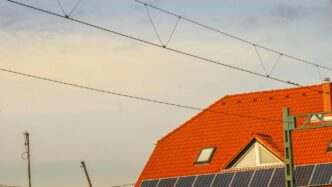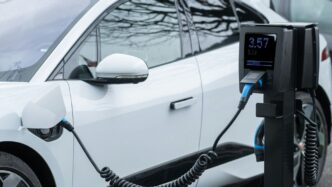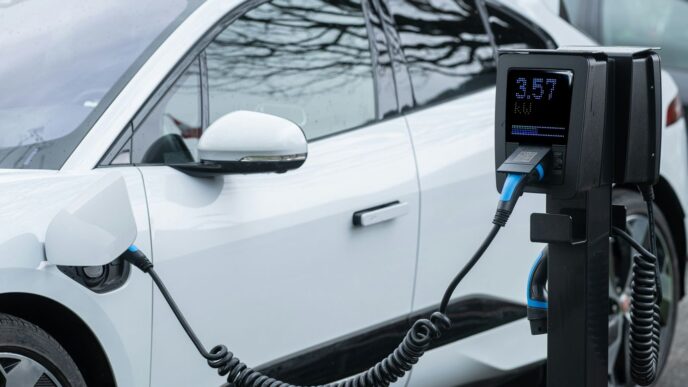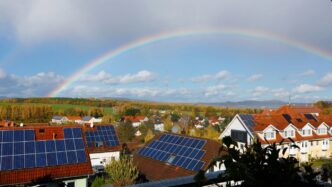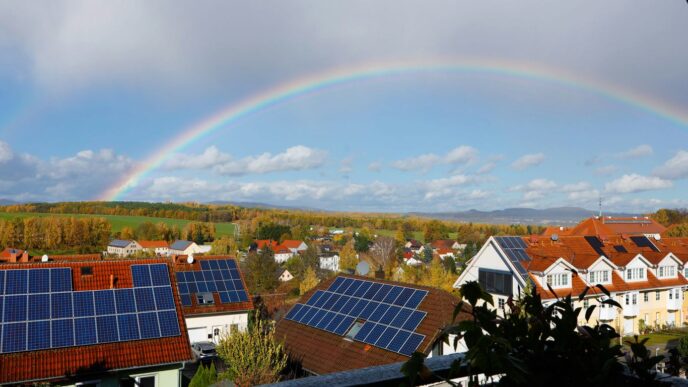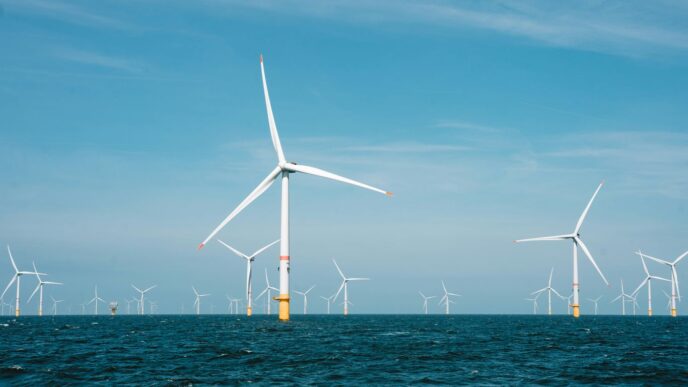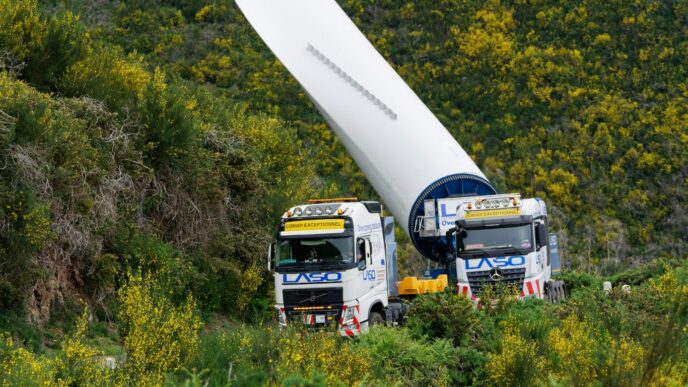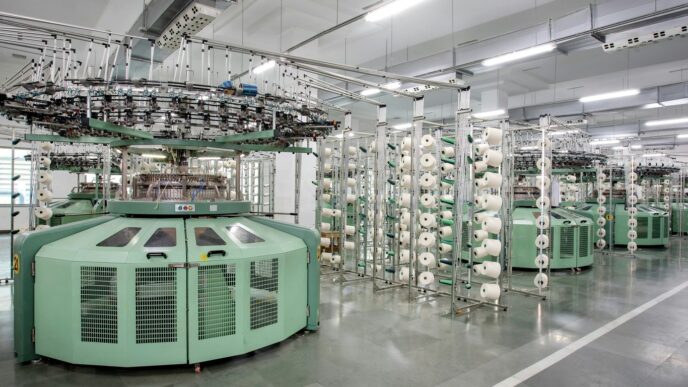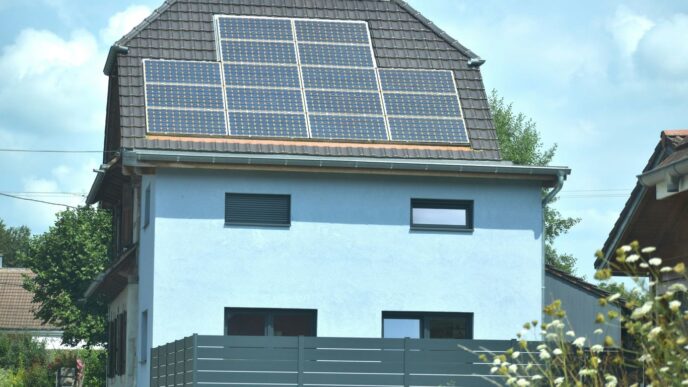California has been a big name in solar power for a while, especially with rooftop panels. But what about folks who can’t put panels on their own roof? That’s where california community solar comes in. It’s a way for more people to get in on the clean energy action, no matter if you rent an apartment or don’t have the right kind of roof. This article dives into how community solar is opening doors to renewable energy for everyone in the Golden State.
Key Takeaways
- California community solar lets people subscribe to a shared solar project and get credits on their electricity bills, making solar accessible even without a rooftop installation.
- This approach helps renters, apartment dwellers, and those in disadvantaged communities gain access to clean energy benefits, addressing gaps in solar equity.
- Community solar projects can reduce energy costs for participants, help California meet its climate goals faster, and create local jobs.
- Initiatives like the Community Solar Pilot Program and Clean Power Alliance’s program are actively working to expand solar access across the state.
- Future advancements in policy and collaboration are expected to further scale up california community solar, promoting a more equitable and sustainable energy future for all residents.
Understanding California Community Solar
What is California Community Solar?
So, what exactly is community solar? Think of it like a big, shared solar farm. Instead of putting panels on your own roof, which isn’t an option for a lot of people, you can subscribe to a piece of a larger solar project built nearby. This could be on unused land, old landfills, or even commercial buildings. Your subscription means you get credits on your electricity bill for the power that your share of the solar farm produces. It’s a way to get the benefits of solar energy without needing your own sunny rooftop.
Bridging the Gap in Solar Access
California has been a big player in rooftop solar for a while, which is great. But, and this is a pretty big ‘but’, most households can’t actually put solar panels on their homes. This includes renters, people living in apartments, or those whose roofs just aren’t set up for it. Community solar is designed to fix this problem, making sure more Californians can tap into clean energy. It opens the door for folks who were previously left out of the solar revolution.
Here’s a quick look at who benefits:
- Renters and apartment dwellers
- Homeowners with shaded or unsuitable roofs
- Low-income households
- Residents in disadvantaged communities
Key Benefits for Residents and Communities
Beyond just getting solar power, community solar offers a bunch of good things. For residents, it often means lower electricity bills. Since you’re getting power from a shared, often more efficient, system, the costs can be lower than what you might pay otherwise. For communities, these projects can bring local jobs during construction and provide a steady source of clean energy. It’s a win-win that helps both people and the planet.
Some of the main advantages include:
- Reduced energy costs: Subscribers get credits on their bills.
- Increased access to clean energy: Opens solar to those who can’t install rooftop systems.
- Local economic development: Can create jobs and support local economies.
- Environmental benefits: Contributes to California’s climate goals by adding renewable energy to the grid.
Expanding Renewable Energy Access
Community Solar for Renters and Apartment Dwellers
So, you rent your place. Maybe you live in an apartment building or a house where putting solar panels on the roof just isn’t an option. For a long time, this meant you were pretty much out of luck when it came to using solar power. But community solar is changing that. It’s like a big, shared solar farm that lots of people can subscribe to. You don’t need your own roof; you just sign up for a share of the energy produced by a local solar project. This means renters and people living in apartments can finally get in on the clean energy action, getting credits on their electricity bills without having to own any equipment or make any changes to their homes. It’s a pretty neat way to make solar power available to way more people.
Empowering Disadvantaged Communities
Community solar is also a big deal for communities that haven’t always had the best access to resources, including clean energy. Think about areas that have historically faced more pollution or have lower incomes. These communities often miss out on the benefits of solar. Community solar projects can be specifically built in or near these areas, allowing residents to subscribe and save money on their energy bills. It’s a way to make sure that everyone, no matter their income level or where they live, can benefit from renewable energy and the savings that come with it. This helps level the playing field and makes the energy transition fairer for everyone.
Overcoming Rooftop Solar Limitations
Rooftop solar is great, don’t get me wrong. But it’s not for everyone. Besides renters, there are other reasons why putting panels on your own house might not work. Maybe your roof is old, or it’s shaded by trees, or you just can’t afford the upfront cost. Community solar steps in to fill these gaps. It allows for larger, more efficient solar installations on land that might not be suitable for homes, like old industrial sites or landfills. By subscribing to these projects, people who can’t go solar on their own can still participate. It’s a flexible solution that broadens the reach of solar power significantly across California.
California’s Community Solar Initiatives
California has been a leader in solar energy for a while, especially with rooftop solar. But let’s be real, not everyone can put panels on their roof. Renters, people in apartments, or those with shady roofs are often left out. That’s where community solar comes in, and California is starting to get serious about it.
The Community Solar Pilot Program
This program, part of the Low-Income Weatherization Program (LIWP), was designed to help folks who couldn’t get in on other low-income solar deals. The main idea was to test out different ways to get community solar to low-income households. They wanted a model that could be copied and scaled up, helping cut down on pollution, lower energy bills, and even create some jobs.
One cool example is a project managed by GRID Alternatives. They got a good chunk of change to build a solar farm on tribal land in Riverside County. This project helps out about 38 homes on the reservation and around 200 other low-income households nearby. It’s expected to generate a ton of electricity over 30 years and save participants a good amount of money. Plus, some local residents got job training during the installation. The pilot program wrapped up in 2021, showing that these kinds of projects can really work.
Clean Power Alliance’s Community Solar Program
Clean Power Alliance (CPA) has its own community solar program aimed at bringing clean energy to underserved areas. They’ve got a project in Bassett and Avocado Heights that uses a rooftop solar setup on a commercial building. This system can power up to 360 homes, and participants get their energy at a 20% discount. The best part? You don’t need to buy or install any equipment yourself. If you’re already getting discounts through programs like CARE or FERA, you could save up to 45% on your electricity bill.
The California Public Utilities Commission (CPUC) set up the program so that energy providers like CPA can team up with developers and local groups. They match developers with nonprofits or schools that then sponsor projects for nearby residents in what are called Disadvantaged Communities (DACs). Once the solar farm is built, people in the community can sign up to get credit for some of the power it produces. It’s all about making sure more people, especially those who might not have had a chance before, can benefit from renewable energy.
Successful Project Examples in California
Beyond the pilot program and CPA’s efforts, other projects are popping up. For instance, a solar farm in Inyokern shows how community solar can really make a difference. It’s a great example of how public and private groups can work together to meet climate goals. This project, and others like it, demonstrate that community solar is a real way to get solar power to people who rent or have other barriers to rooftop solar. It’s about making renewable energy more accessible to everyone, not just homeowners. These projects are helping California move closer to its clean energy targets while also providing savings and opportunities for local communities.
Economic and Environmental Advantages

Reducing Energy Costs for Households
Community solar projects can really help folks save money on their electricity bills. Instead of putting panels on your own roof, which isn’t an option for many people like renters or those living in apartments, you can subscribe to a piece of a larger solar farm. The power generated is then credited back to your utility bill. This means you get the benefits of solar energy without the upfront cost or the hassle of installation. It’s a way to make renewable energy more affordable for everyday Californians.
Achieving State Climate Goals
California has some pretty ambitious targets for clean energy, aiming for 100% renewable electricity by 2045. Community solar plays a big part in hitting those numbers. By building more solar farms, especially in places that might not be suitable for rooftop panels, we can generate a lot more clean power. This helps cut down on the greenhouse gases that come from burning fossil fuels. Think of it like this:
- Reduced Greenhouse Gas Emissions: Each community solar project helps take polluting power plants offline.
- Less Reliance on Fossil Fuels: More clean energy means we don’t have to depend as much on coal and natural gas.
- Meeting Renewable Energy Mandates: These projects directly contribute to the state’s goals for clean energy generation.
Job Creation and Local Economic Growth
Building and maintaining these solar farms creates jobs right here in California. We’re talking about construction work, electrical jobs, and ongoing maintenance roles. Plus, these projects often use local businesses for supplies and services, which gives the local economy a boost. It’s not just about clean energy; it’s about building a stronger economy too. Some projects have even been built on land that wasn’t being used much before, like old industrial sites or landfills, turning them into productive energy sources.
The Future of California Community Solar

So, what’s next for community solar in California? It’s a pretty exciting time, honestly. We’re seeing a lot of movement towards making these programs even better and reaching more people. It feels like the state is really starting to get behind the idea that everyone should have a shot at clean energy, not just homeowners with sunny roofs.
Policy and Programmatic Advancements
Right now, there’s a big push to refine how community solar projects are paid for. Think about the Net Value Billing Tariff – a lot of folks, including lawmakers and community groups, are backing it. They sent a letter to the Public Utilities Commission (PUC) saying this tariff would really help disadvantaged communities and lower-income folks get in on the renewable energy transition. It’s about making sure the benefits are shared. The U.S. Energy Secretary even mentioned a goal to power 5 million homes with community solar by 2025, saving folks money. That’s the kind of big-picture thinking we need.
Collaboration for Scalable Solutions
Making community solar work on a large scale means a lot of different groups need to work together. We’re talking about solar companies, people who advocate for lower utility bills, and environmental justice organizations. They’re all pretty much on the same page, wanting a community solar program that’s fair and effective. Even builders are getting on board because meeting new solar requirements for new homes is tough without these kinds of programs. It’s like everyone’s realizing that community solar is a key piece of the puzzle for a cleaner grid.
Ensuring Equitable Energy Futures
Ultimately, the goal is to make sure that as California moves towards more renewable energy, nobody gets left behind. Community solar is a big part of that. It’s a way to bring solar power to people who rent, live in apartments, or just don’t have the right kind of roof. Programs like the Community Solar Pilot Program and Clean Power Alliance’s initiative are already showing how this can work, bringing discounts and clean energy to neighborhoods that really need it. The future looks brighter when we build it together, making sure clean energy is for everyone.
Looking Ahead: A Brighter, More Inclusive Energy Future
So, what does all this mean for California? It means we’re getting closer to a future where everyone, no matter if you own a home or rent an apartment, can tap into the power of the sun. Community solar isn’t just some fancy new idea; it’s a practical way to make sure clean energy benefits all of us, not just a select few. By supporting these kinds of programs, we’re not only helping the environment but also making our energy bills a little lighter and creating jobs right here at home. It’s a win-win, really, and something we should all be excited about as California keeps leading the way in renewable energy.

